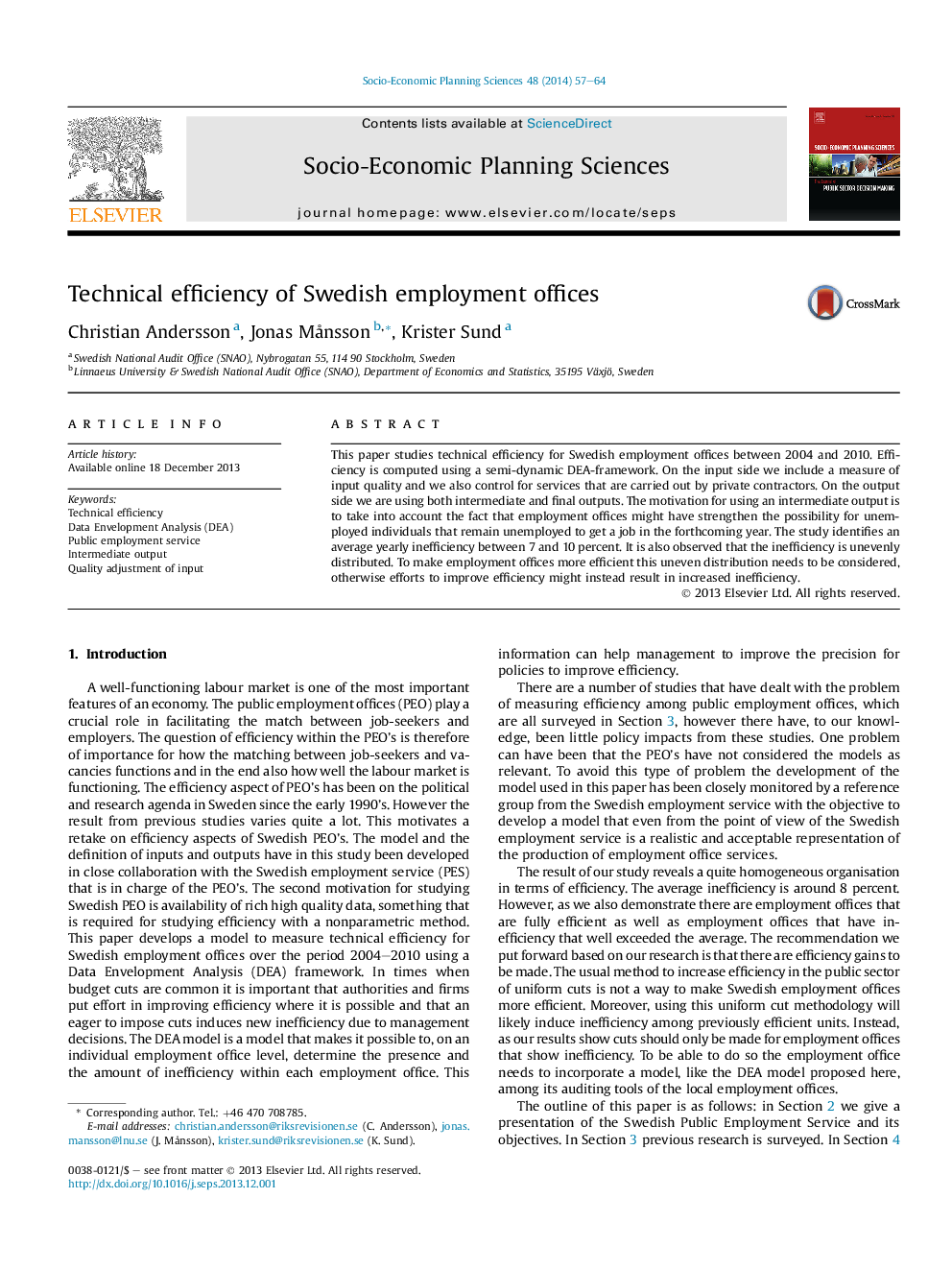| کد مقاله | کد نشریه | سال انتشار | مقاله انگلیسی | نسخه تمام متن |
|---|---|---|---|---|
| 987103 | 935118 | 2014 | 8 صفحه PDF | دانلود رایگان |
• We analyse efficiency in Swedish employment offices over a 6 years period.
• We use intermediate output to account for work that have improved the unemployed possibility to get a job.
• We use an index to adjust for differences in input quality, i.e. the likelihood that an unemployed get a job.
• Average inefficiency around 8 percent but not evenly distributed.
• Using the common practice of equal cuts in input to reach efficiency might increase inefficiency.
This paper studies technical efficiency for Swedish employment offices between 2004 and 2010. Efficiency is computed using a semi-dynamic DEA-framework. On the input side we include a measure of input quality and we also control for services that are carried out by private contractors. On the output side we are using both intermediate and final outputs. The motivation for using an intermediate output is to take into account the fact that employment offices might have strengthen the possibility for unemployed individuals that remain unemployed to get a job in the forthcoming year. The study identifies an average yearly inefficiency between 7 and 10 percent. It is also observed that the inefficiency is unevenly distributed. To make employment offices more efficient this uneven distribution needs to be considered, otherwise efforts to improve efficiency might instead result in increased inefficiency.
Journal: Socio-Economic Planning Sciences - Volume 48, Issue 1, March 2014, Pages 57–64
